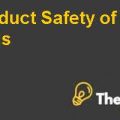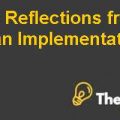INTRODUCTION
Nokia Corporation is a multi-national communication corporation. It is mainly focused on a key growth area of wired and wireless telecommunications. Nokia was founded in 1865, as a paper pulp business, which transformed into a global telecommunications leader. Currently, Nokia is the world’s largest manufacturer of mobile phones, with the global market share of approximately 38% in Q2 in 2007. Nokia is operating in more than 150 countries around the world. The mobile phone era for Nokia started in 1981, when the first international mobile phone network was built called the Nordic Mobile Telephone (NMT). In 2007, Nokia ranked among the top five “Best Global brands”.
In 1997, the Indian government established the Telecom regulatory Authority of India (TRIA) that announced a new telecom policy.Nokia started its operations in Indian Market in 1995, with the market share of approximately 70% in 2004. Nokia has become one of the leading brands in India due to its quality products, localized offering to Indian customer, and its trusted relations with the media and shareholders. The company has three Research and development centers in Hyderabad, Bangalore and Mumbai. The major competitors of Nokia are Samsung, Motorola, and Sony Ericson. However, in spite of high competition in the cellular industry, Nokia had 40% of the global market share in 2007.
RISK IDENTIFICATION
According to the case, the company received 100 complaints from customers about overheating of the batteries while charging in 2007. A particular batch of batteries was supplied by Japanese Venture, Matsushita from between December 2005 to November 2006. The company advised the customers regarding defect issues of BL-5C model in their phones and offers replacement battery.The risk in BL-5C batteries that it will overheat, explode and pop out of the phone.
However, according to the Finnish company no serious injuries, and property damage have been reported. Moreover, Indian media industry take an advantage of this statement and produces wrong rumors about Nokia, and compare this situation with train explosion. This negative opinion of media creates fear in Indian population. The risk may damage the company’s reputation in the long term and can create an advantage for competitors. In the short term, overheating of the battery may cause injury, but heating failures are rare.
ANALYSIS OF RISK
The solution provided by the company to overcome the issue is that the customers would input battery information on Nokia’s website, which advisee the owner if the battery is affected or not. If affected, then they will inform the owner about the free battery replacement process. However, the Indian population may not differentiate between a product advisor and product recall, due to lack of internet usage and customers would be unable to check their battery defects.
The Indian media spread wrong and negative sentiments about the battery problem and the advisory and misuse the product recall strategy of the company. When the media compared the recall with the train explosion, it created an unnecessary panic. This negative statement of media damage the brand image of the company, which leads to long term negative consequences.
A bomb in your pocket Crisis leadership at nokia india Case Solution
Nokia initiated mechanism that helped the customers to input the battery information on Nokia’s website. However, the majority of the people are not aware about the internet facility, so in order to overcome that the company should use another mechanism such as, SMS instead of internet for customers to send their battery information. This decision making framework would be worth for the company’s progress because this will allow the customer for an instant response about the battery. The cost estimated in the risk is $150 million. The financial costs include return of defective batteries, replacement of new batteries, shipping and courier cost, SMS and advertisement costs.
MITIGATION
The company should propose a strategy to use leadership approach, by allocating tasks to the different departments of the company, in order to actively respond to local business and customers’ complaints. The company must ensure that the message which is sent to the customers via SMS should be understandable. The advisory department should include dedicated cross-departmental team to handle the replacement battery effectively. Moreover, they should communicate with the stakeholders by utilizing the media, in this way the wrong image created by media can be removed.
The company should empower the local dealers by giving them replacement batteries. This local solution will help the company to prevent the time consuming in providing services to the customers. Furthermore, toll free services, telephone helpline at Customer care centers and Nokia priority dealers should be available. The company should also contact with DHL to courier the replacement batteries to the customers quickly and efficiently. The company should ask the Nokia headquarters for additional resources and employees to mitigate with this crisis...............
This is just a sample partial case solution. Please place the order on the website to order your own originally done case solution.













